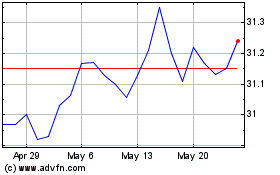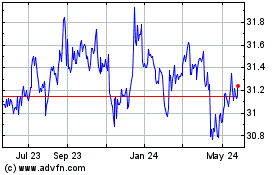The economic and political drama in Europe has been responsible
for negative market sentiments throughout the globe. Recently, the
broader markets slumped badly on account of global risk aversion
triggering massive sell-offs in the equity markets (see Forget
European Woes with These Three Country ETFs). This had negative
repercussion in the Private Equity (PE) backed initial public
offerings as of late, as activities were sluggish on account of
lower exit volume by the PE players (read Do You Need A Private
Equity ETF?).
Therefore these negative developments had adversely affected
Merger and Acquisition activities throughout the globe as the
slippery global economic condition worsened. However, things have
started to look much better as we witness some sort of conclusion
over the future of Greece in the Euro zone. Even the merger
activities on the U.S domestic front have spiked sharply higher
with thirteen new deals announced and six closing.
At a time like this when merger activities are bullish,
investors can take advantage of an arbitrage opportunity present in
the price differentials on the target and acquiring company stocks.
This strategy can also provide returns independent of the overall
market, making it especially important with today’s uncertain
economic conditions.
Merger Arbitrage Explained
Merger arbitrage is a strategy which looks to tap the spread
that is present between the price at which the stock of a company
trades post announcement of its takeover (i.e. target company) by
another company (i.e. acquiring company) and the price per share
that the acquiring company is willing to pay for the takeover as
purchase consideration.
Basically, this differential exists due to the uncertainty that
the deal will not go through. If it does, however, investors
generally can make a few percent quite easily, although if it
doesn’t, investors can face some losses in the process (see Three
Low Beta ETFs For The Uncertain Market).
A simple merger arbitrage strategy would be to take opposite
positions (long/short) in the stocks of the target and acquiring
company. However, what position to take in which company would
entirely depend on the investor’s perception about the deal.
For example, if he expects the deal to get finalized he would
benefit by short selling the acquiring company’s shares and taking
a long position on the target company. On the other hand if he
expects that the deal would not materialize, opposite positions
should be taken.
Risks involved
Capturing the spread in merger arbitrage strategies involves
certain risks that the investors should be aware of including the
following:
Risk related to legal issues is one of the most
important risks to consider for a merger deal. These deals involve
a great deal of due-diligence and compliance. Any negative
development on either company could lead to the deal breaking
off.
Political risk is an omnipresent enemy in
cross-border merger transactions. These risks refer to
inter-country relations, taxation issues, and currency
risks to name a few. Although this might not seem much, it
has a great influence in the merger deals (see more in the
Zacks ETF Center).
Leverage and interest rate risk arises in case
of leveraged buy-outs (LBO’s). It is a scenario in
which the acquiring company uses junk bonds (below investment grade
bonds) to finance the costs of deal. The debt issued might have
severe consequences on the existing book value of debt in the books
of the acquiring company.
Moreover, the average cost of debt tends to increase as these
companies issue junk bonds. These consequences might result in the
deal not getting finalized.
Merger Arbitrage ETFs
Nevertheless, merger arbitrage provides an excellent opportunity
to earn profits from price differentials from the same market
space. However, taking advantage of this arbitrage involves great
deal of financial understanding as well as expertise on legalities
and compliances with the present norms, therefore it cannot be
enjoyed by every investor. Also high transaction costs act as an
entry barrier for many investors.
However, merger arbitrage exchange traded funds (ETFs), with
their low cost structure and expertise, provide an excellent
opportunity for the common investor to tap in the opportunities
provided by mergers worldwide. Below we share some of the options
available to the investors in this interesting space for those
curious about implementing this technique in their portfolios:
Credit Suisse Merger Arbitrage Liquid ETN
(CSMA) was debuted in October 2010 and tracks the Credit
Suisse Merger Arbitrage Liquid Index. The index employs a merger
arbitrage strategy and holds long or short position in securities
of companies that have already publicly announced their merger and
acquisition activity subject to various quantitative as well as
qualitative conditions.
Just five months in to the launch of CSMA, the Credit
Suisse 2X Merger Arbitrage Liquid ETN (CSMB) was
introduced in March of 2011 to provide a leveraged play on similar
investment strategy as CSMA (read Leveraged and Inverse ETFs:
Suitable Only For Short Term Trading).
It is prudent to note that the CSMA (exchange traded note) does
not base its investments on predictions and forecasts for future
mergers, but only includes securities based on factual evidence
post announcement of the merger deal by the concerned entity.
While this might help to reduce risk of non-materialization of
the merger deal, it also caps the upside potential as the market
price would already have discounted the deal announcement.
CSMA and CSMB both being ETN’s would not have any tracking
error, however, since these instruments are issued as senior debt
obligations of the issuing company they would be subject to the
credit risk of the issuing institution (read ETFs vs. ETNs: What’s
The Difference?).
CSMA has total assets of $90.71 and an average daily volume of
22,507 shares whereas CSMB has attracted $22.97 million in its
asset base and trades on an average 15,358 shares daily. Both these
products charge 55 basis points in fees and expenses.
IQ Merger Arbitrage ETF (MNA)
The ETF tracks the before price and yield performance of the IQ
Merger Arbitrage Index. This benchmark provides exposure in
domestic as well as global companies which have recently announced
their takeover by another company.
The ETF places its bets on the fact that the target company’s
stock price would appreciate post announcement. As a hedge, MNA
takes short positions in certain acquiring company’s stocks as
well.
The ETF is exposed to a variety of currency denominated assets
which makes it vulnerable to exchange rate risk. MNA was launched
in November of 2009 and since then has attracted total assets worth
$23.72 million dollars.
It has an average daily volume of 7,324 shares and charges a
relatively high 76 basis points in fees and expenses. Presently,
MNA holds about 25 long positions and 3 short positions with
roughly 60% of the assets going towards the top 10 holdings. Over
the past one year, MNA has lost 1.8% while the broad markets have
advanced by roughly two percent in the same time frame.
Want the latest recommendations from Zacks Investment Research?
Today, you can download 7 Best Stocks for the Next 30
Days. Click to get this free report >>
CS-MRGR ARB IDX (CSMA): ETF Research Reports
CS-MRG AR 2XNET (CSMB): ETF Research Reports
IQ-MERGER ARB (MNA): ETF Research Reports
To read this article on Zacks.com click here.
Zacks Investment Research
Want the latest recommendations from Zacks Investment Research?
Today, you can download 7 Best Stocks for the Next 30 Days. Click
to get this free report
NYLI Merger Arbitrage ETF (AMEX:MNA)
Historical Stock Chart
From Jan 2025 to Feb 2025

NYLI Merger Arbitrage ETF (AMEX:MNA)
Historical Stock Chart
From Feb 2024 to Feb 2025
